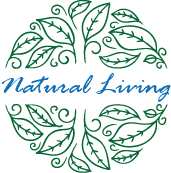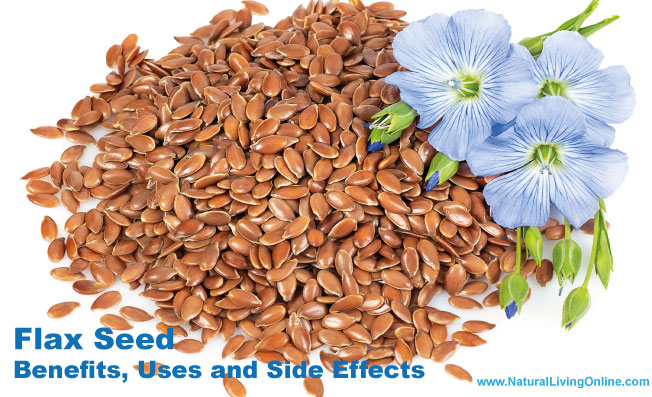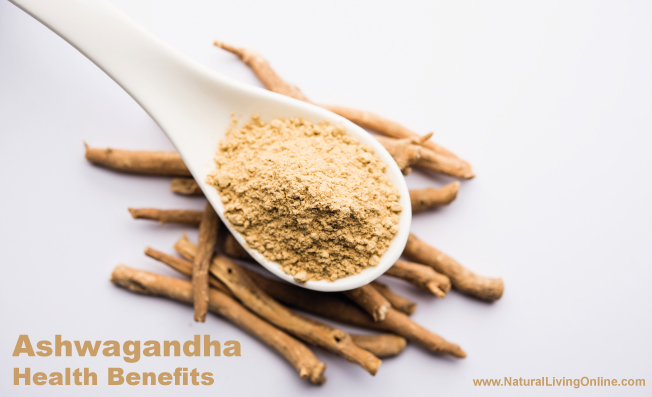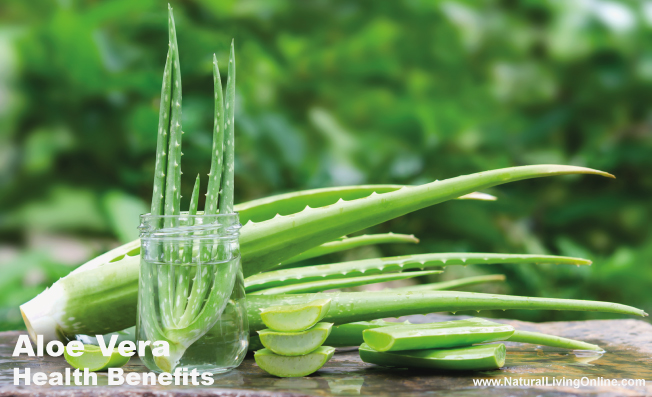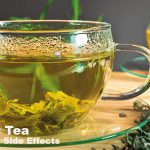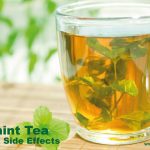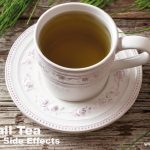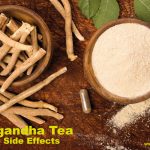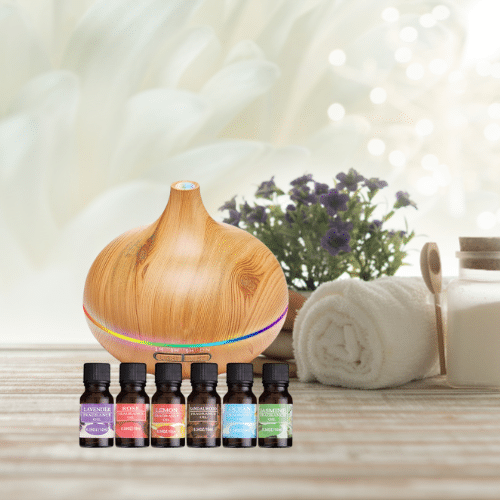Neem has been used for centuries in Ayurvedic and Siddha medicine for their wide range of medicinal properties. The main active compound in Neem tree leaves is azadirachtin. Azadirachtin has antibacterial, antifungal, and antiviral properties. It is effective against a wide range of bacteria, including Staphylococcus aureus, Escherichia coli, and Pseudomonas aeruginosa. Azadirachtin also has antifungal activity against Candida albicans and Aspergillus niger. In addition, it inhibits the replication of viruses such as herpes simplex virus, influenza virus, and human immunodeficiency virus. Neem leaves are also a rich source of polyphenols, flavonoids, carotenoids, and triterpenes. These compounds have antioxidant, anti-inflammatory, and anticancer activity.
Plant profile
Botanical Name: Azadirachta indica
Family: mahogany (Meliaceae)
Genus: Azadirachta
Species: indica
Habitat: Neem is found in the tropical and semi-tropical regions of India, Sri Lanka, Pakistan, Bangladesh, and Nepal.
Common Names: Indian lilac, margosa tree, nimtree, Pride of India
Parts Used: leaves, bark, seeds, fruit
Constituents: limonoids (azadirachtin, nimbin), triterpenes (3- beta-hydroxyursolic acid), flavonoids, tannins, carotenoids
Actions: antimicrobial, anti-inflammatory, antioxidant, immunostimulant, hypoglycemic, hypotensive
What is Neem?
Neem is an evergreen tree native to India and Sri Lanka. The tree grows to a height of 15-20 m, with a spread of 12-15 m. The leaves are ovate-lanceolate, 10-15 cm long and 5-6 cm broad, with a rounded base and acute apex. The flowers are white, borne in dense axillary clusters. The fruit is a smooth, brownish-black drupe, 3-5 cm in diameter.
Uses
Neem Leaves:
Fresh or dried neem leaves can be used for the treatment of a wide range of diseases and disorders. Neem leaves have a bitter taste and cooling properties. They are traditionally used topically for the treatment of skin diseases like eczema, psoriasis, and acne. They are also used internally for the treatment of digestive disorders, diabetes, and fever. Neem leaves can be consumed fresh, dried, or powdered. Neem tea is one of the best ways to get the Neem benefits.
Neem leaves can be consumed fresh, dried, or powdered. They can also be made into a Neem tea by boiling 10-15 leaves in water for 10 minutes. The tea can be taken 1-2 times daily.
Neem Bark:
The bark of the Neem tree is used in Ayurvedic and Siddha medicine for the treatment of gastrointestinal disorders, diabetes, and fever. The bark and seeds of the neem tree can be taken in powdered form.
Neem Seeds:
Neem seeds are used in Ayurvedic and Siddha medicine for the treatment of skin diseases, digestive disorders, and diabetes.
Neem Oil:
Neem oil is extracted from the seeds of the Neem tree. Neem oil can be applied topically to the skin for the treatment of skin diseases like eczema, psoriasis, and acne. It can also be taken internally for the treatment of digestive disorders, diabetes, and fever. Neem oil has a strong smell and should be used in small amounts.
Neem Water:
Neem water is a decoction made by boiling neem leaves in water. It can be used for bathing, as it has antimicrobial and anti-inflammatory properties that can help to soothe the skin. Neem water can also be used as a mouthwash, as it can help to freshen breath and reduce inflammation in the mouth. To use neem water for bathing, add 1 cup of neem leaves to a pot of boiling water and let it simmer for 10 minutes. Strain the leaves and add the water to your bathtub. Soak in the tub for 15-20 minutes. To use neem water as a mouthwash, add 1 cup of neem leaves to a pot of boiling water and let it simmer for 10 minutes. Strain the leaves and add the water to a cup. Gargle with the neem water for 1 minute and then spit it out. Repeat 2-3 times daily. Neem water is not recommended for use during pregnancy or breastfeeding.
Precautions:
Neem leaves, bark, and seeds can cause gastrointestinal upset if taken in large doses. Neem oil can cause nausea and vomiting if taken in large doses. Neem should not be used during
When using neem medicinally, it is important to consult a healthcare practitioner before taking any form of neem as it can interact with certain medications. Neem is not recommended for use during pregnancy or breastfeeding.
Summary
With so many uses and medicinal benefits Neem can be called a one tree pharmacy. Different parts of this tree has been used for centuries to treat wide range of diseases.
20 Neem health benefits
1. Diabetes
Neem leaves have hypoglycemic activity and can be used in the treatment of diabetes. The leaves lower blood sugar levels by stimulating the release of insulin from the pancreas and by increasing the sensitivity of cells to insulin. Neem tea can be used for diabetics very effectively with the consultation of a doctor to regulate your medication so your sugar level does not drop dramatically to dangerous levels.
2. Hypertension
Neem leaves have hypotensive activity and can be used in the treatment of hypertension. The leaves lower blood pressure by dilating blood vessels and by reducing the production of angiotensin II, a hormone that promotes vasoconstriction.
3. Gastrointestinal disorders
Neem leaves have gastroprotective activity and can be used in the treatment of gastrointestinal disorders. The leaves protect the stomach lining from ulceration and damage by inhibiting the production of stomach acid and by stimulating the production of mucus. Neem tea is one of the best ways to take Neem internally.
4. Skin diseases
Neem leaves have antimicrobial and anti-inflammatory activity and can be used in the treatment of skin diseases. The leaves are effective against a wide range of bacteria, including Staphylococcus aureus, Escherichia coli, and Pseudomonas aeruginosa. In addition, they reduce inflammation and redness in the skin.
5. Malaria
Neem leaves have antimalarial activity and can be used in the treatment of malaria. The leaves kill the Plasmodium falciparum parasite, which is responsible for malaria, by inhibiting its growth and reproduction.
6. Cancer
Neem leaves have anticancer activity and can be used in the prevention and treatment of cancer. The leaves inhibit the growth and spread of cancer cells by inducing apoptosis ( programmed cell death). In addition, they reduce the expression of genes that promote cancer cell proliferation.
7. Immunostimulant
Neem leaves have immunostimulant activity and can be used to boost the immune system. The leaves stimulate the production of white blood cells and antibodies, which help fight infections.
8. Anti-inflammatory
Neem leaves have anti-inflammatory activity and can be used to reduce inflammation. The leaves inhibit the release of inflammatory mediators, such as histamine and prostaglandins. In addition, they reduce the swelling of inflamed tissue.
9. Antioxidant
Neem leaves have antioxidant activity and can be used to protect cells from damage caused by oxidative stress. The leaves scavenge harmful free radicals and prevent them from damaging cell membranes, DNA, and proteins.
10. Wound healing
Neem leaves have wound healing activity and can be used to speed up the healing of wounds. The leaves promote the formation of new blood vessels and collagen, which are essential for wound healing. In addition, they reduce inflammation and redness in the skin.
Neem leaves have antiviral activity and can be used to treat viral infections. The leaves inhibit the replication of viruses, such as influenza virus, herpes simplex virus, and human immunodeficiency virus. In addition, they boost the immune system and help fight off infections.
12. Antibacterial
Neem leaves have antibacterial activity and can be used to treat bacterial infections. The leaves are effective against a wide range of bacteria, including Staphylococcus aureus, Escherichia coli, and Pseudomonas aeruginosa. In addition, they reduce inflammation and redness in the skin.
13. Antifungal
Neem leaves have antifungal activity and can be used to treat fungal infections. The leaves are effective against a wide range of fungi, including Candida albicans, Aspergillus niger, and Trichophyton mentagrophytes. In addition, they reduce inflammation and redness in the skin.
14. Antiparasitic
Neem leaves have antiparasitic activity and can be used to treat parasitic infections. The leaves are effective against a wide range of parasites, including worms, mites, and fleas. In addition, they reduce inflammation and redness in the skin.
15. Diuretic
Neem leaves have diuretic activity and can be used to increase urine output. The leaves promote the production of urine and help remove excess water from the body. In addition, they reduce inflammation and redness in the skin.
16. Digestive aid
Neem leaves have digestive aid activity and can be used to improve digestion. The leaves stimulate the production of stomach acid and by stimulating the release of digestive enzymes. In addition, they reduce inflammation and redness in the skin.
17. Liver tonic
Neem leaves have liver tonic activity and can be used to improve liver function. The leaves increase the production of bile and help remove toxins from the body. In addition, they reduce inflammation and redness in the skin.
18. Detoxification
Neem leaves have detoxification activity and can be used to remove toxins from the body. The leaves bind to toxins and help remove them from the body. In addition, they reduce inflammation and redness in the skin.
19.Oral hygiene:
Neem twigs have been used to clean teeth for centuries. The twigs are effective in removing plaque and tartar from teeth and gums. In addition, they help reduce gum inflammation and bleeding.
20.Hair Health
Neem leaves can be used to improve hair health. The leaves are rich in nutrients and help to nourish the scalp and hair. In addition, they help to reduce dandruff and hair loss. It is very effect against lice and nits while being gentle on the skin.
Frequently Asked Questions:
What are the neem side effects?
Neem is generally safe for most people when taken in the recommended doses. However, some people may experience side effects such as stomach upset, diarrhea, and vomiting. If you experience any adverse reaction after taking neem, stop taking it and consult a healthcare practitioner. Neem is not recommended for use during pregnancy or breastfeeding.
Which medications Neem may interact with?
Neem may interact with certain medications, such as blood thinners, diabetes medication, and immunosuppressants. If you are taking any of these medications, it is important to consult a healthcare practitioner before taking neem. Neem is not recommended for use during pregnancy or breastfeeding.
Can I eat Neem leaves?
Yes, you can eat neem leaves. They can be consumed fresh, dried, or powdered. You can also make them into a tea by boiling 10-15 leaves in water for 10 minutes. The tea can be taken 1-2 times daily. Neem leaves are safe for most people when taken in the recommended doses. However, some people may experience side effects such as stomach upset, diarrhea, and vomiting. If you experience any adverse reaction after taking neem leaves, stop taking them and consult a healthcare practitioner. Neem leaves are not recommended for use during pregnancy or breastfeeding.
Can I apply Neem oil on my face?
Yes, Neem oil, extracted from fruits of Neem tree, can be applied topically to the skin for the treatment of skin diseases. Neem oil is generally safe for most people when used in the recommended doses. However, some people may experience side effects such as skin irritation and allergic reactions. If you experience any adverse reaction after applying neem oil to your skin, stop using it and consult a healthcare practitioner. Neem oil is not recommended for use during pregnancy or breastfeeding.
How Neem oil is made?
Neem oil is made by pressing the seeds of the neem tree. The oil has a strong smell and can be used topically on the skin or added to cosmetics. Neem oil is generally safe for most people when used in the recommended doses.
References:
- Importance of Neem Leaf: An insight into its role in combating diseases
- To evaluate the antigingivitis and antipalque effect of an Azadirachta indica (neem) mouthrinse on plaque induced gingivitis: A double-blind, randomized, controlled trial
- Evaluation of anti-plaque microbial activity of Azadirachta indica (neem oil) in vitro: A pilot study
- An overview of Neem (Azadirachta indica) and its potential impact on health
- Neem (Azadirachta indica): Prehistory to contemporary medicinal uses to humankind
- Neem: A Tree For Solving Global Problems
- Siddha medicine–background and principles and the application for skin diseases
- Effects of Azardirachta indica on Vascular Endothelial Growth Factor and Cytokines in Diabetic Deep Wound
- Azadirachta indica: A herbal panacea in dentistry – An update
This website does not provide medical advice.
All information provided on this website, and on associated social media networks, including but not limited to texts, images, and numbers are for general information purpose only. It is not intended as medical advice and it does not include all possible precautions, side effects, or interactions that may occur. Neither NaturalLivingOnline.com nor its author/founder take responsibility for how you use this information. Statements contained on NaturalLivingOnline.com have not been evaluated by the FDA. You should conduct thorough research via multiple sources and consult your physician or qualified doctor before using any essential oil or herbal remedy. Information on NaturalLivingOnline.com must not be relied upon for medical, legal, financial or other decisions.
